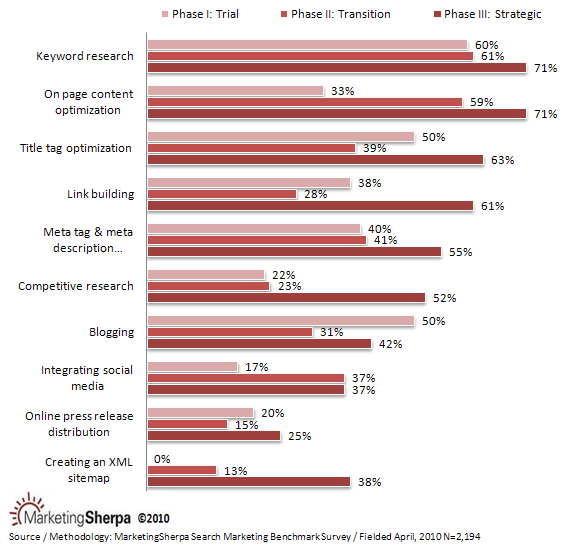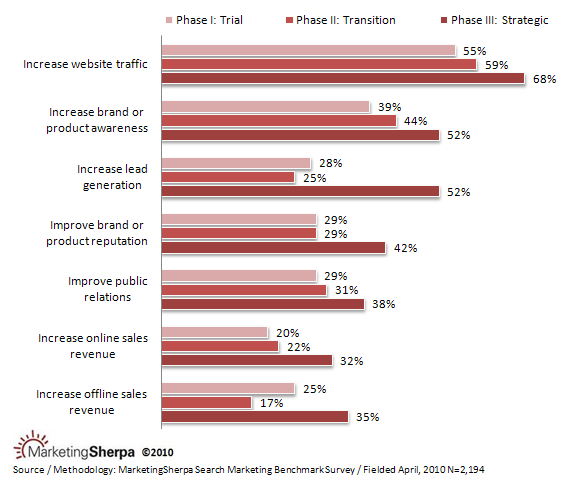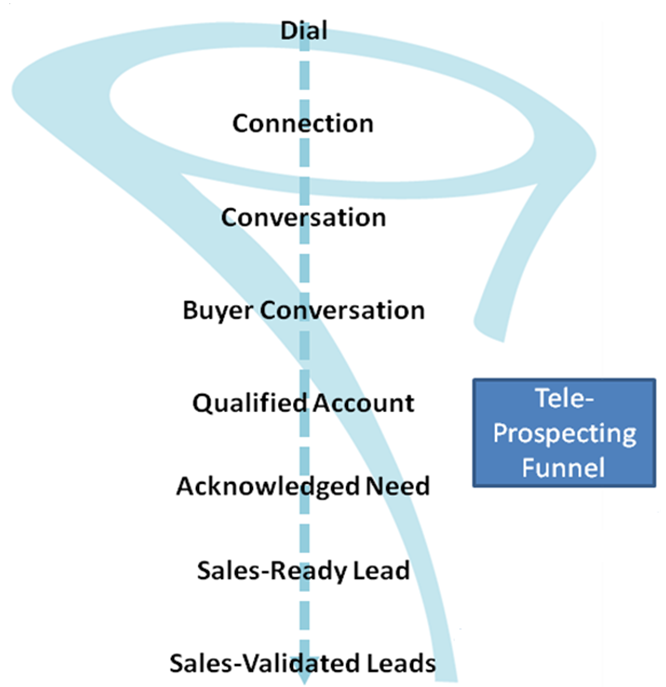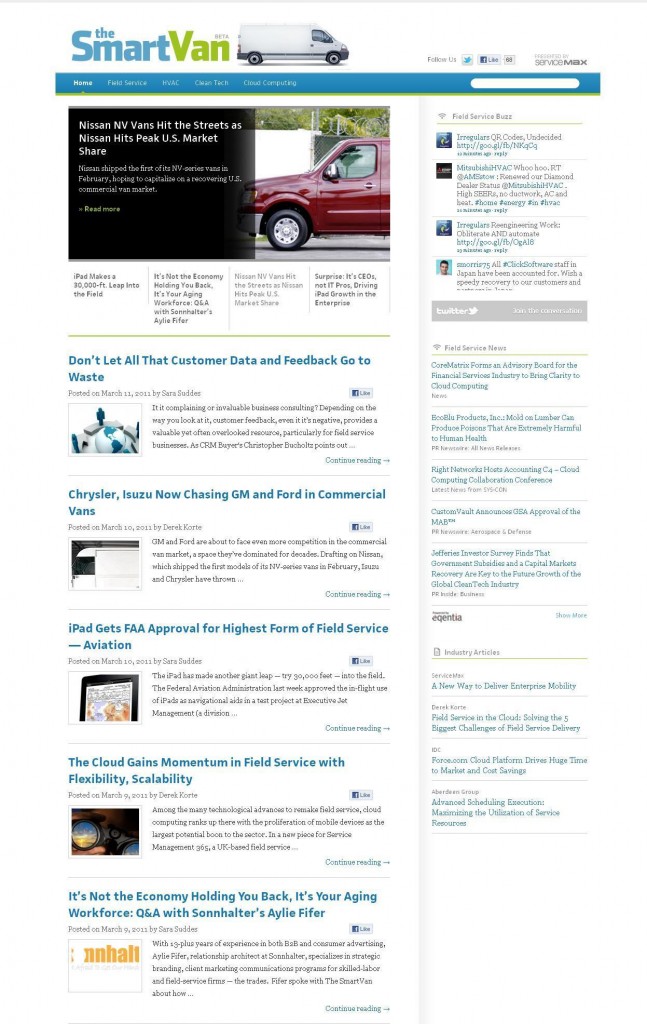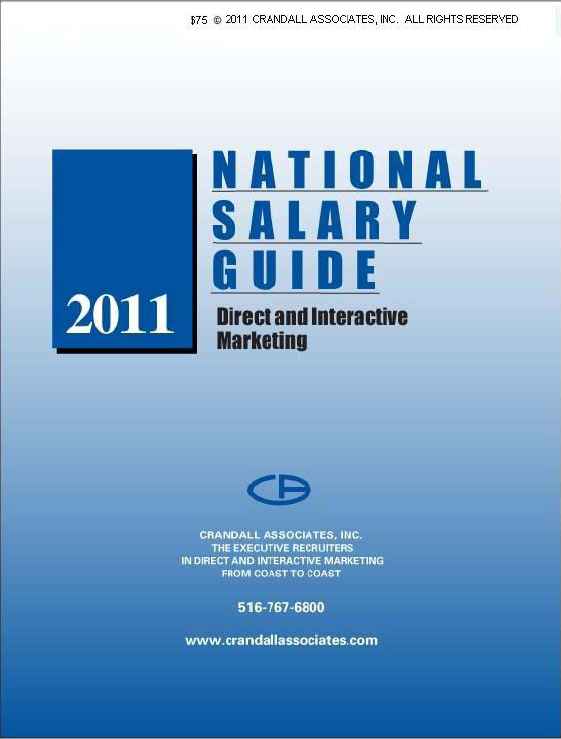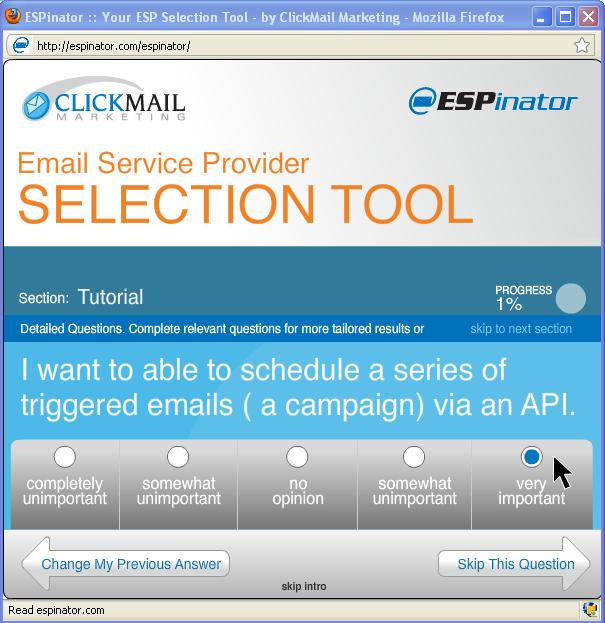Search Marketing: The importance of an SEO Process
I know those three buzz letters in the headline – S, E, and O – likely grabbed your attention and are the reason you’re reading this blog post. But I want to tell you why you should focus more on the last, and perhaps least buzzy, word in that headline – process. First of all, put a mirror up to your current search-engine optimization activities for just a moment and ask yourself…
- Do I have a well-developed strategy for my SEO program?
- Do I have an action plan for achieving my goals?
- Do I have a process that enables me to concentrate my organization’s limited resources on the greatest opportunities?
Well, do you? Or do you jump straight into execution, pulling tactics together in what you hope will be the right mix?
If you nodded yes to that last question, you’re not alone. In the 2011 MarketingSherpa Search Marketing Benchmark Report – SEO Edition, we learned that 46% of marketers have an informal process they randomly perform for their SEO programs and 20% are basically flying by the seat of their pants.
Chart: SEO maturity
Q. Please select the statement below that best describes the process your organization uses to perform search engine optimization (SEO) practices.
Keeping track is not the same as forethought
Some organizations know that they have no process. Others, however, may think they have a process because they document their plans. But does that documentation look anything like this “process” I followed in a past work life?
4:53 PM – Frantic phone call informing me that next quarter’s plan and budget projections are needed by COB. Of course, this is the first any of us are hearing of this.
4:54 PM – Pull up the most recent plan. Change the dates.
4:55 PM – Google the latest and greatest tactics. Replace what we had been doing with these. (Since newer is always better, right?)
4:57 PM – Adjust the budget ask by 50%. Double the ROI projection. (Rationale: if I had twice the money, I am sure I could produce twice the return on investment. Fuzzy math, but who’s paying attention.)
4:58 PM – Email it, marked URGENT
5:00 PM – Sign off, and call it a day
Obviously, I am being facetious with this example. But, there is still an element of truth to it. These exercises were often needlessly rushed, leaving us with the feeling that we were throwing money at the market instead of spending money to market. We often recycled the same set of tactics out of habit. But, we were equally guilty of trying something new because it was new – and not because we determined it was a more efficient or effective way to reach our objectives.
Action is nothing without direction
Now, if my earlier example sounded too contrived, consider some of these responses from marketers, collected during last year’s Search Marketing survey, when asked how they plan their SEO strategy:
- Identify opportunity keywords, optimize, sit back and watch the love roll in.
- Every quarter we “guesstimate” how much to invest in strategy.
- No strategy. We just repeat key phrases.
- We have no true strategy. We look at traffic and sales, try to figure out what areas need help, and focus on those.
- We have no real plan, just routine efforts to improve page content and keywords as well as tie in social media efforts.
- We do a lot of planning to optimize for search, but, once done, we have no on-going strategy except to monitor performance.
- We are actually working on putting in place a real process for SEO, because, in the past, some actions have been done at random, like: put a title on some pages, a description on others…
- HIPPO (Highest Paid Person’s Opinion). That would be me. It is all done by gut and needs to be revised.
At first glance, these comments may not seem too alarming. Most are actively doing something. So what’s the concern?
The issue is this: Organizations that adopt a strategic approach to SEO management by formalizing their SEO processes receive the greatest benefits from their SEO tactics almost across the board, as indicated in this chart:
Chart: Very effective SEO tactics by SEO maturity
As if that were not enough, strategic organizations are also able to more effectively use SEO to achieve their marketing objectives, as the next chart reveals. For example, 52% of marketers in the strategic phase, or those with formalized processes, said that SEO is very effective at increasing lead generation, but only 28% of marketers in the trial phase, or those with no SEO process, could say this. Similar performance gaps exist for other standard objectives.
Chart: very effective SEO objectives by SEO maturity
Elements of a successful SEO process
Unfortunately, it becomes difficult to know whether you are really getting the most for your money without a process in place. While the most effective process varies by industry and company, the system you develop should ensure that you consistently:
- scan the marketplace
- review your capabilities
- define objectives
- assess alternative courses of action
- measure progress
- and make adjustments based on all of this business intelligence.
If you have not developed a systematic process for the development and management of your SEO programs, I encourage you to take the time to do so. It may be the best SEO investment you make this year.
This week marks the opening of MarketingSherpa’s Eighth Annual Search Engine Marketing Benchmark Survey. If you’re involved in search marketing, please take the next 5 to 15 minutes to provide data and insights.
As a thank you for your time, we are offering a complimentary report titled “Research on Integrating Social Media with SEO.” This report provides data aggregated from more than 2,000 marketers on their goals for search and social integration and the platforms used for achieving them.
Please help us spread the word by tweeting or posting the following invitation too: Search marketers share your insights. Take the Search Engine Marketing Benchmark Survey at http://bit.ly/hi19OQ
Related Resources
Search Marketing: Three questions to help you think like your potential customers
Search Marketing: Tips on mastering the latest innovations in this mature category
Search Marketing: How to avoid and remove Google penalties (Members’ Library)
Search Engine Optimization: The SEO value (or lack thereof) of domain name keywords




